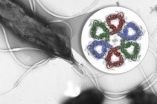(Press-News.org) Patients with sickle cell disease rely more on the emergency room as they move from pediatric to adult health care, according to researchers at Washington University School of Medicine in St. Louis.
An analysis of Medicaid data of more than 3,200 patients with sickle cell disease shows that emergency room visits tripled from age 15 to age 24. The research is reported Dec. 10 at the American Society of Hematology's annual meeting, in Atlanta.
"There seems to be a breakdown in medical care during the transition from childhood to adulthood," says hematologist Morey A. Blinder, MD, associate professor of medicine. "Not only emergency department usage, but hospitalizations go up during this time as well."
One possible explanation for the increased reliance on emergency care, according to Blinder, is the relative lack of adult health care providers with experience caring for sickle cell patients. Similar issues are arising for other pediatric diseases, such as cystic fibrosis and hemophilia, which were previously fatal. Over the past few decades, an increasing number of children and teenagers are living into adulthood with these conditions and there often aren't enough primary care physicians who can provide care for these adult patients.
Sickle cell disease refers to a number of inherited genetic conditions that cause the normally round, disk-like red blood cells to take on a characteristic "sickle" shape. These malformed red blood cells do not carry oxygen to the body as well as healthy cells and are prone to clogging smaller blood vessels. The condition is often painful in places the cells block blood flow. Some of the more severe complications include blindness, strokes and pneumonia.
In the study, researchers examined data of 3,200 Medicaid patients with sickle cell disease from the mid 1990s through 2010. The researchers followed patients from five states (Florida, New Jersey, Missouri, Iowa and Kansas) for an average of six years each and included those moving from pediatric to adult care.
The study showed that emergency department visits tripled over nine years, increasing from 0.76 per quarter at age 15 to more than two per quarter at age 24. At age 36, use of emergency care peaked at almost three visits per quarter, or about one per month. Even by age 50, reliance on emergency care did not return to the lower levels seen in childhood.
More emergency care and hospitalizations also result in higher overall medical costs. Total health care costs were more than $7,000 higher per quarter for patients making heavier use of the emergency department, even as they tended to spend less on medication, perhaps simply failing to fill prescriptions.
Blinder says the St. Louis region and Missouri in general have good support for adults with sickle cell disease, though this is not always the case nationally.
"In areas without good adult support for this disease, you have to identify adult physicians who would be interested in treating sickle cell patients," Blinder says. "They could be hematologists or even internists, but in general there are not enough providers for adult sickle cell patients.
"This study highlights an emerging problem in transitioning pediatric age patients to adulthood, and the need to explore new ways to facilitate that process," Blinder says.
INFORMATION:
The study was funded by Novartis Pharmaceuticals. Blinder is a consultant for Novartis and receives some research support from the company. Several of the study's co-investigators are employed by Novartis.
Blinder MA, Vekeman F, Sasane M, Trahey A, Paley C, Magestro M, Duh MS. Age-related emergency department reliance and healthcare resource utilization in patients with sickle cell disease. Presented Dec. 10, 2012, American Society of Hematology Annual Meeting.
Washington University School of Medicine's 2,100 employed and volunteer faculty physicians also are the medical staff of Barnes-Jewish and St. Louis Children's hospitals. The School of Medicine is one of the leading medical research, teaching and patient care institutions in the nation, currently ranked sixth in the nation by U.S. News & World Report. Through its affiliations with Barnes-Jewish and St. Louis Children's hospitals, the School of Medicine is linked to BJC HealthCare.
Into adulthood, sickle cell patients rely on ER
2012-12-10
ELSE PRESS RELEASES FROM THIS DATE:
New studies reveal critical insights to improve care of patients with sickle cell disease
2012-12-10
(ATLANTA, December 10, 2012) – Research unveiling key gaps in continuity of care for sickle cell patients transitioning from pediatric to adult care will be presented this week during the 54th Annual Meeting of the American Society of Hematology (ASH).
Sickle cell disease (SCD) is an inherited, chronic blood disorder affecting between 90,000 and 100,000 Americans. Instead of producing healthy red blood cells, individuals with the disease produce abnormal, sickle-shaped cells that cannot easily move through blood vessels and deliver adequate oxygen to the body's tissues ...
Joslin scientists: Brown adipose tissue beneficial for metabolism and glucose tolerance
2012-12-10
BOSTON – December 10, 2012 – Joslin Diabetes Center scientists have demonstrated that brown adipose tissue (BAT) has beneficial effects on glucose tolerance, body weight and metabolism. The findings, which may lead to new treatments for diabetes, appear in the upcoming issue of the Journal of Clinical Investigation.
Unlike the more prevalent white adipose tissue (WAT or white fat) which stores fat, BAT (or brown fat) burns fat to produce heat. Studies in mice and humans have suggested that BAT also plays a role in regulating body weight and metabolism. This has made ...
Elk bones tell stories of life, death, and habitat use at Yellowstone National Park
2012-12-10
Josh Miller likes to call himself a conservation paleobiologist. The label makes sense when he explains how he uses bones as up-to-last-season information on contemporary animal populations.
Bones, he says, provide baseline ecological data on animals complementary to aerial counts, adding a historical component to live observation. In his November cover article for the Ecological Society of America's journal Ecology, he assesses elk habitat use in Yellowstone National Park by their bones and antlers, testing his method against several decades of the Park Service's meticulous ...
New multiple myeloma drug shows promise in treating people with advanced disease
2012-12-10
A new oral agent under review by the U.S. Food and Drug Administration (FDA) is safe and effective in treating relapsed and treatment-resistant multiple myeloma, according to a multicenter, Phase II study presented by Mount Sinai School of Medicine researchers at the American Society of Hematology (ASH) Annual Meeting. The meeting is taking place December 8-11, 2012 in Atlanta.
A multi-center research team evaluated 113 patients with multiple myeloma who had received at least two prior therapies and had subsequent disease progression to determine safety and efficacy of ...
Morning vs nighttime replacement affects adverse events with extended-wear contact lenses
2012-12-10
Philadelphia, Pa. (December 10, 2012) - For people using 30-day extended-wear/continuous-wear (EW/CW) contact lenses, replacing lenses at night doesn't lower the risk of complications compared to changing lenses monthly, suggests a study – "The Effect of Daily Lens Replacement During Overnight Wear on Ocular Adverse Events", appearing in the December issue of Optometry and Vision Science, official journal of the American Academy of Optometry. The journal is published by Lippincott Williams & Wilkins, a part ofWolters Kluwer Health.
In contrast, replacing lenses every ...
Face transplantation calls for 'reverse craniofacial planning'
2012-12-10
Philadelphia, Pa. (December 10, 2012) - As surgical teams gain experience with facial transplantation, a careful approach to planning based on the principles of craniofacial surgery can help to maximize patient outcomes in terms of facial form and function, according to an article in The Journal of Craniofacial Surgery. The journal, under the editorship of Mutaz B. Habal, MD, is published by Lippincott Williams & Wilkins, a part ofWolters Kluwer Health.
In patients with extensive facial defects including loss of the normal bone and soft tissue landmarks, a "reverse craniofacial ...
Survey shows breakthrough medical research relies heavily on NIH funding
2012-12-10
(ATLANTA, December 10, 2012) – A survey highlighting the correlation between today's cutting edge medical research and the National Institutes of Health (NIH) funding was released today at the 54th Annual Meeting of the American Society of Hematology (ASH), the preeminent medical meeting for physicians and scientists in hematology that draws more than 20,000 attendees from around the world. The survey, representing responses from 1,040 abstract presenters from the U.S. and abroad, demonstrates how critical NIH funding has been to the success of science and medicine.
"Every ...
The image of mental fatigue
2012-12-10
We all perhaps know the feeling of mental exhaustion, but what does it mean physiologically to have mental fatigue? A new study carried out using brain scans could help scientists uncover the neurobiological mechanisms underlying mental fatigue.
According to Bui Ha Duc and Xiaoping Li of the National University of Singapore writing in a forthcoming issue of the International Journal Computer Applications in Technology, mental fatigue has become commonplace as many people face increasing mental demands from stressful jobs, longer working hours with less time to relax and ...
Researchers demonstrate that a saliva analysis can reveal decision-making skills
2012-12-10
A study conducted by researchers at the University of Granada Group of Neuropsychology and Clinical Psychoneuroimmunology has demonstrated that cortisol levels in saliva are associated with a person's ability to make good decisions in stressful situations.
To perform this study, the researchers exposed the participants (all women) to a stressful situation by using sophisticated virtual reality technology. The study revealed that people who are not skilled in decision-making have lower baseline cortisol levels in saliva as compared to skilled people.
Cortisol –known ...
Experiment finds ulcer bug's Achilles' heel
2012-12-10
Experiments at the U.S. Department of Energy's (DOE) SLAC National Accelerator Laboratory have revealed a potential new way to attack common stomach bacteria that cause ulcers and significantly increase the odds of developing stomach cancer.
The breakthrough, made using powerful X-rays from SLAC's Stanford Synchrotron Radiation Lightsource (SSRL), was the culmination of five years of research into the bacterium Helicobacter pylori, which is so tough it can live in strong stomach acid. At least half the world's population carries H. pylori and hundreds of millions suffer ...



